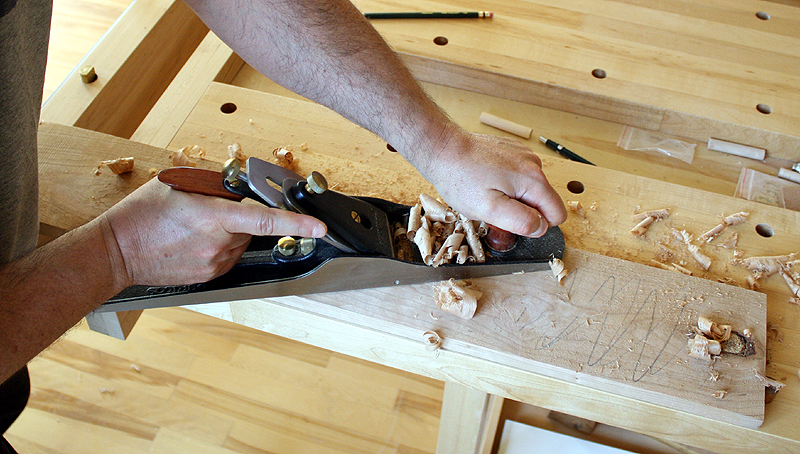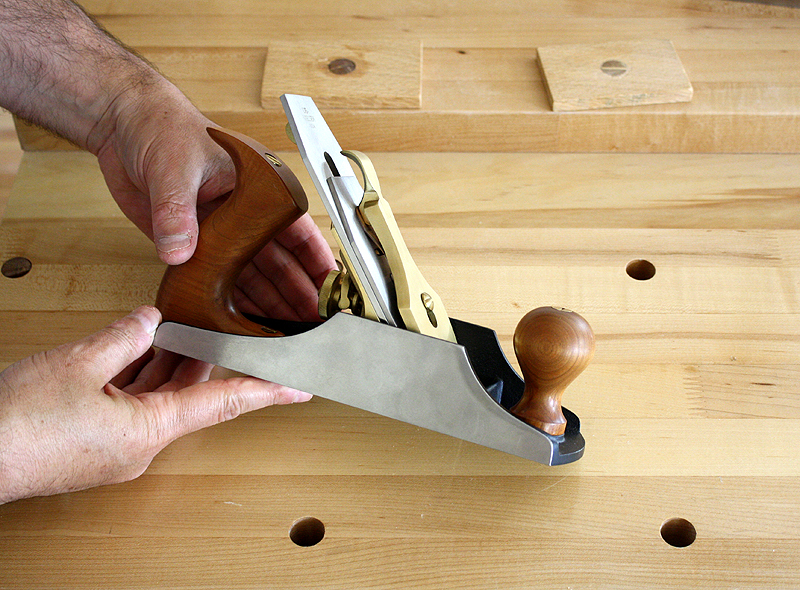
In this tutorial, hand planes and their uses and techniques are presented. Hand planes have been a part of woodworking shops for centuries. Hand plane use can range from preparing or dressing wood, creating joinery on wood to finishing or smoothing wood.
Hand planes are but one tool in the hand tool arsenal which every fine furniture shop should strive to acquire. The first part of the tutorial describes different hand planes and their uses. The range covered is from the more common hand planes to a few specialty hand planes. Following this section is an introduction to hand plane techniques with step by step sequences of more common handplaning operations.
The step by step sequences describe how to create and smooth an edge joint on a board, how to dress a rough board to a predetermined thickness and flatness. Block planes are covered with steps on planing the end of a board as well as creating a chamfer along an edge.

Workshops can be either machine oriented or hand tool oriented at the other extreme. Hybrid workshops benefit from both machinery and hand tools. I favor workshops which utilize machinery to process raw wood and then use hand tools in the later stages of furniture making.
Very often, it is quicker to tune or create a joint using a hand plane rather than go to the trouble of setting up machinery to perform the same task. The dust free, quiet environment which hand planes provide is a large advantage for the small shop. This tutorial will answer many questions you have about hand planes and their use in the workshop. I use hand planes extensively in my furniture making workshop. Instead of unhealthy dust, I generate wood shavings and get exercise! After following the tutorial with the included videos, you will have a good understanding of what to look for when selecting and using hand planes.

